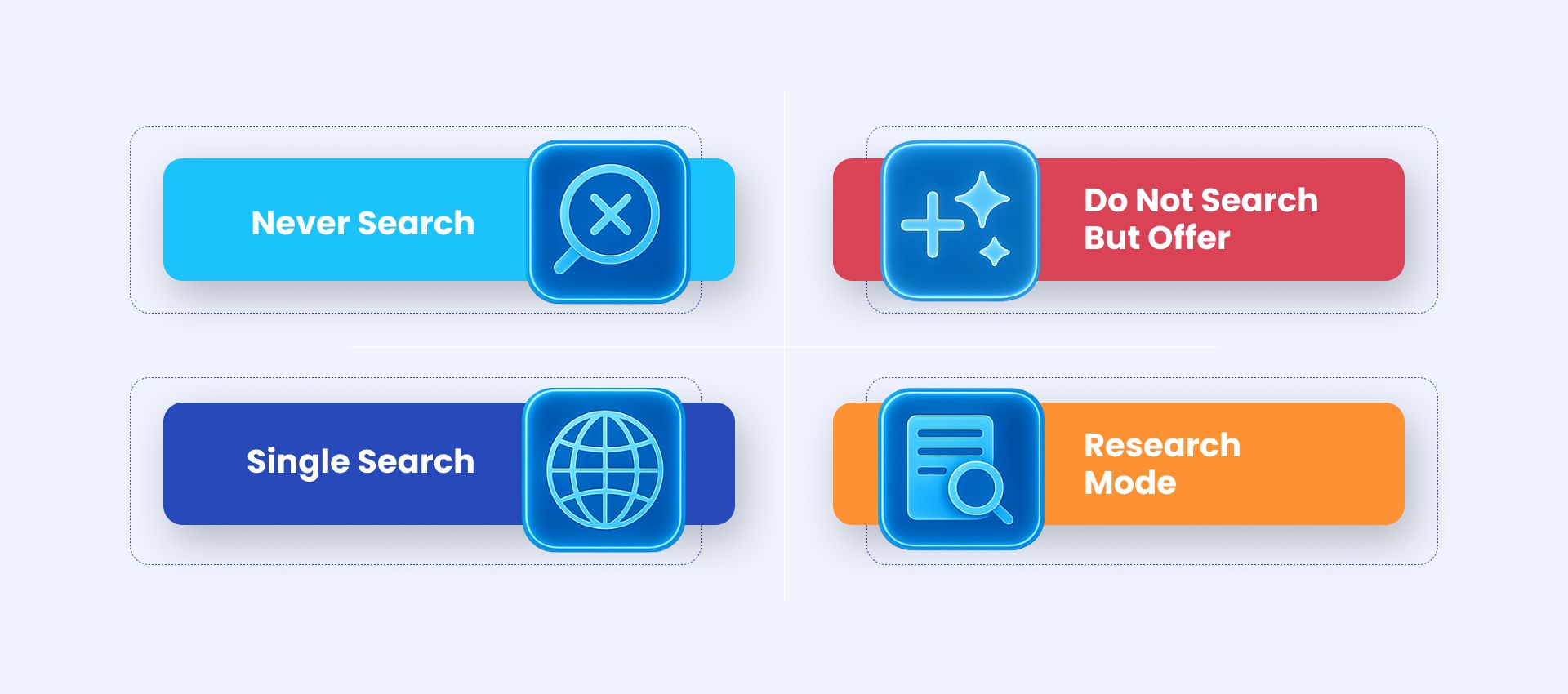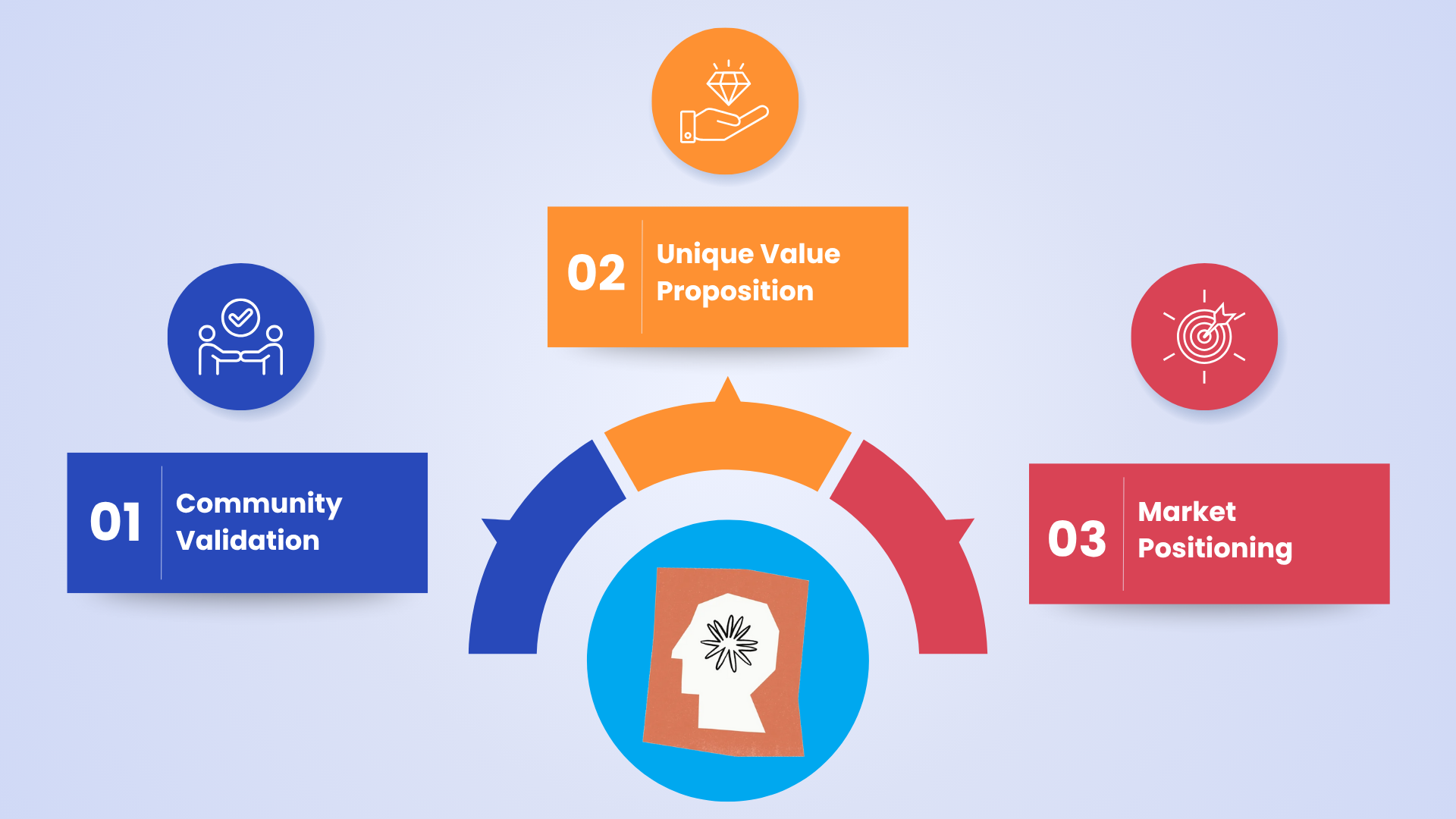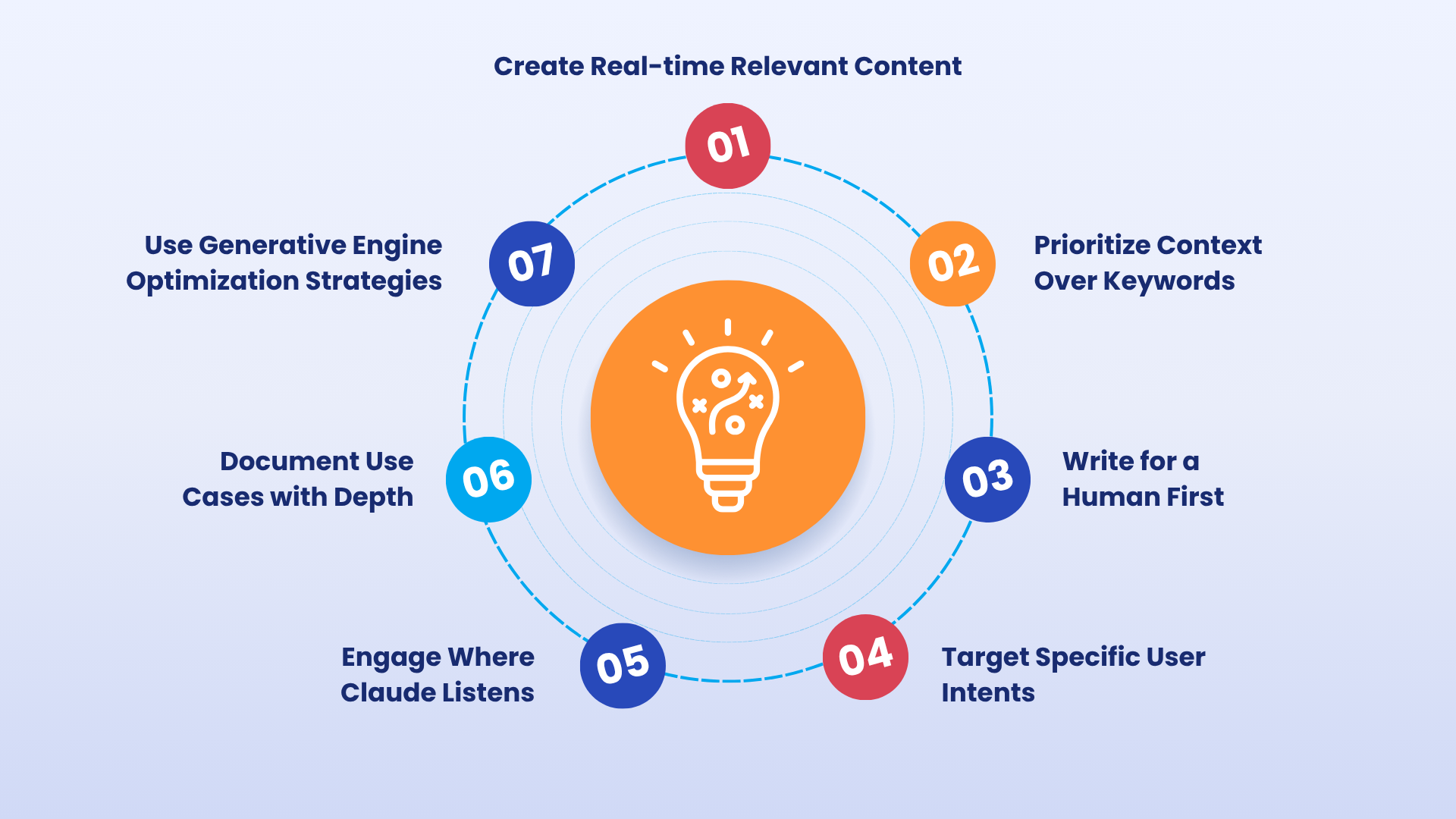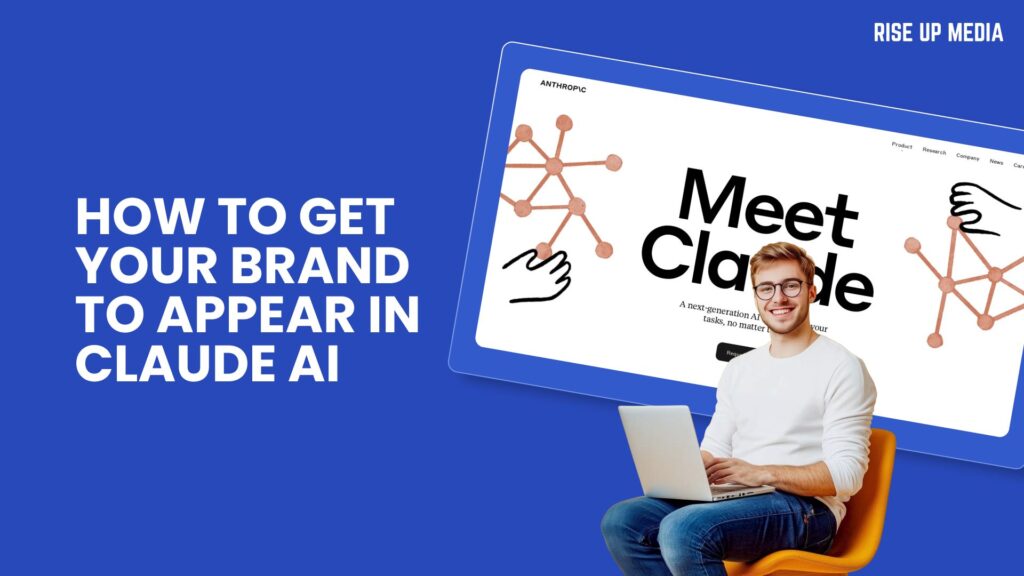Conversational AI tools like Claude AI are the new gateway to online discovery, while traditional search results are getting fewer clicks now that users can grab quick answers from AI Overviews.
It’s no longer enough to rank on Google.
You also need to be top of mind for the machines that are answering the questions. If your brand isn’t showing up in Claude AI’s outputs, you’re falling behind. But it’s not hard to catch up!
Here’s how to get your brand to appear in Claude AI and why it’s a must-do for Web3 brands.
TL;DR
- Claude AI rewards clarity and authority, not fluff.
- Claude can access live web data, but only when needed.
- Brands can stand out to Claude with community validation, a strong UVP, and clear market positioning.
- Optimize for Claude with relevant content, context over keywords, human-like language, user intent, engaging on Claude-friendly sites, documenting what your company does, and using generative engine optimization.
What Is Claude AI (& Why Does it Matter for Brands)?

Claude AI is Anthropic’s answer to conversational AI. It’s become a trusted assistant for anyone looking for clean, citation-rich, reliable information.
Brands that appear in its recommendations may gain serious authority and traffic. Since Claude AI isn’t influenced by ad spend or traditional SEO, it truly seeks out the best information related to a query.
Users are catching on quickly.
For brands in industries that require a great deal of trust (like fintech and crypto), appearing in Claude AI is a powerful vote of confidence. It’s also a free traffic source, one whose users likely have high intent related to their queries.
How Claude AI Finds Information on the Web
Claude AI can search the web in real time, giving users up-to-date responses. When it searches the web, it creates clickable sources for easy fact-checking.
Anthropic, the company behind Claude, uses bots to scan public websites to feed its models.
If you want your brand to be visible to Claude, you must understand how these bots work:
- ClaudeBot is the main crawler that scans public sites. If your site allows it, ClaudeBot may index your content for training or reference purposes. Blocking it excludes your content from Claude’s knowledge base.
- Claude-User represents activity from Claude AI users. When you ask Claude a question that requires web information, Claude-User fetches URLs or metadata from sites. Blocking this bot means your site can’t appear in live answers.
- Claude-SearchBot indexes web pages for Claude’s internal search system. If you allow access, you could appear in embedded search results.
Claude AI will follow whatever rules you’ve placed in your robots.txt file, whether it’s allowing bots to crawl full pages or asking it not to index content.
4 Search Categories That Determine Your Visibility

Claude AI doesn’t treat every question the same. Depending on the type of prompt and the tools available, it chooses one of four search behaviors, each with different implications for visibility.
Never Search
Claude sometimes relies solely on pre-trained knowledge without reaching for fresh information. These include general questions, creative writing tasks, and technical explanations already covered in training data.
If your brand wasn’t part of the training set (or isn’t widely known), you won’t appear in these responses.
Do Not Search But Offer
In this mode, Claude doesn’t access the web but still suggests specific tools, platforms, or services based on what it has already learned. This is common for questions like “What are some fintech apps for small businesses?” or “Top crypto platforms.”
Brands that get listed here usually have strong reputations, broad mentions in trusted sources, or structured schema markup.
Single Search
With single search, Claude performs one targeted web search to pull in current data or verify a fact. Examples include questions about recent events, pricing, availability, or niche topics not covered in training.

Pages that are easily crawlable, well-ranked, and clearly authoritative are more likely to appear.
Research Mode
This is Claude’s most intensive retrieval mode. It runs multiple searches, compares sources, and synthesizes answers for complex, high-stakes, or nuanced queries. Think multi-step analysis or deep-dive questions.
Brands that appear repeatedly across high-quality content, especially on trusted domains, have the best shot at being cited.
What Makes Your Brand Content ‘Claude-Friendly’?

Claude doesn’t play by keywords and backlinks. It prioritizes content that demonstrates trust, clarity, and usefulness. Claude-friendly content stands out because it reflects genuine authority, not manufactured expertise.
Here are the three core factors that drive brand visibility:
Community Validation
Claude delivers what’s broadly recognized and consistently referenced across multiple sources. If your brand shows up in industry forums, product roundups, customer reviews, Reddit threads, and comparison articles, that signals value to users and AI models.
Mentions in places like GitHub, Stack Overflow, or trusted review platforms also carry weight, especially if they’re organic.
Unique Value Proposition
Claude looks for what sets a product apart from others. If your brand messaging includes clear differentiation (e.g., “uses zero-code automation” or “optimized for mobile devs”), Claude is more likely to pick up on them.
Ambiguous marketing gets filtered out. Crisp, specific, benefit-driven language matters.
Market Positioning
AI models like Claude tend to recommend companies with strong niche identities. You don’t have to be the biggest player, just the most clearly defined.
For example, are you the go-to for fintech startups? The preferred digital wallet for university students? Make sure your content, partnerships, and customer case studies reinforce that position.
Consistency across your site, social mentions, and external references helps Claude understand where your brand fits.
7 Strategic Ways to Optimize Your Brand for Claude AI Search

You won’t find traditional SEO rankings on Claude AI. Instead, your content strategy needs to adapt to how generative models collect, assess, and deliver information.
These seven strategies can help position your brand where Claude can see it (and trust it).
Create Real-time Relevant Content
Claude’s training data cuts off in January 2025. Static or outdated content is part of its memory, but it won’t surface in queries that require fresh insight.
To show up in real-time results, your content needs to be current, discoverable, and tied to trending or frequently searched topics.
Prioritize Context Over Keywords
Claude evaluates the intent and context of a page, not just keywords. Content that answers real questions, explains concepts clearly, and positions your brand as a topical expert performs better.
Think like a person, not an algorithm. Things like FAQs, explainers, and “versus” comparisons help Claude understand what you offer and why it matters.
Write for a Human First
Writing like a robot to impress a robot doesn’t work. Instead, write how real users talk — clear, conversational, and in problem-solving mode.
Target Specific User Intents
When Claude builds a response, it interprets the user’s underlying intent beyond the literal phrasing. If your content is trying to be everything to everyone, it won’t show up in relevant results.
But if it aligns with specific user questions, Claude is far more likely to reference it.
There are four major types of intent to design around:
- Informational: Users want to understand something. Write detailed guides, “how it works” breakdowns, and educational content that explains your product or space better than anyone else.
- Navigational: Users are looking for a specific brand or site.
- Transactional: Users are evaluating tools or making buying decisions. This is where product comparisons, “best of” lists, feature tables, and transparent pricing pages matter most.
- Investigational: Users want to compare or validate. Examples include case studies, testimonials, third-party reviews, and long-form analysis.
Clarity is key. If your content satisfies a precise intent (like “best lightweight CRM for freelancers” or “how to migrate from Tool A to Tool B”), you’re more likely to be the brand it recommends.
Generic, bloated content with no clear purpose gets filtered out fast.
Engage Where Claude Listens
Claude pulls from a wide range of reputable sources, including social media like LinkedIn and X, and technical communities like Reddit and Stack Overflow. YouTube accounts for nearly half of Claude’s social media traffic.
Consistent brand mentions across platforms (especially in organic conversation) act as third-party validation. This increases your chances of showing up in Claude’s responses.
Document Use Cases with Depth
Claude prefers substance. To be cited, you need more than landing pages and slogans.
Publish detailed case studies, customer stories, and usage breakdowns. Include real numbers and outcomes. The more data-rich and transparent your content, the more likely Claude will surface it as authoritative.
Use Generative Engine Optimization Strategies
Generative Engine Optimization (GEO) focuses on content structure for LLMs. It loves content that LLMs can parse, scan, and repackage cleanly.
Build an AI visibility pyramid: structured content at the base, consistent messaging in the middle, and community/third-party validation at the top. Use short summaries, clearly labeled sections, bullet points, schema markup, and FAQ blocks.
Bonus: Don’t Forget Technical SEO
Claude doesn’t index sites like Google or Bing. But its bots still crawl sites to learn what your content is about.
If your site isn’t technically sound (think broken links, slow load times, etc.), you’re losing opportunities to show up in Claude results. Keep your robots.txt file open to Anthropic and practice good technical SEO to improve your chances.
How to Future-Proof Your Claude AI Optimization Strategy
Claude just launched a new update in May 2025, and several other iterations prior. It’s evolving quickly, and so are the rules for how it selects, interprets, and recommends brand content.
Optimization is an ongoing strategy. To stay visible and relevant in Claude’s outputs, these tips can help you keep looking forward:
- Stay updated on Claude’s functionalities. Changes like memory, expanded context windows, or web access modes affect how and when your content shows up in results. Monitor product announcements, developer updates, and communities to adjust your strategy.
- Strengthen brand authority. Focus on building durable authority in your space through original research, getting cited by other thought leaders, and contributing to high-trust platforms.
- Diversify your content portfolio. Case studies, blog articles, white papers, product documentation, developer guides, explainer videos, and expert Q&As all feed Claude in different ways.
- Optimize for cross-AI search platforms. Gemini, ChatGPT, Perplexity, and others use their own retrieval systems and training methods. Claude may lead a query today, but another model may answer it tomorrow.
Play the long game. Build authority, stay agile, and create content that will outlast platform shifts.
Need Help Optimizing Your Web3 Brand for AI Search?
Optimizing for Claude and other AI search experiences needs strategy and testing. Most importantly, it needs a bedrock understanding of how these models find and retrieve information so you can build on facts, not guesswork.
Want to see how it’s done? Reach out to our team for help with AI optimization.
FAQs
How do I optimize content for Claude AI?
Focus on creating authoritative, well-structured content that aligns with specific user intents. Give Anthropic’s crawlers (like ClaudeBot) access to your site, publish data-rich resources like case studies or FAQs, and build credibility through consistent mentions on trusted platforms (e.g., Reddit, LinkedIn, X). Prioritize clarity, context, and relevance over keyword stuffing since Claude rewards usefulness, not fluff.




